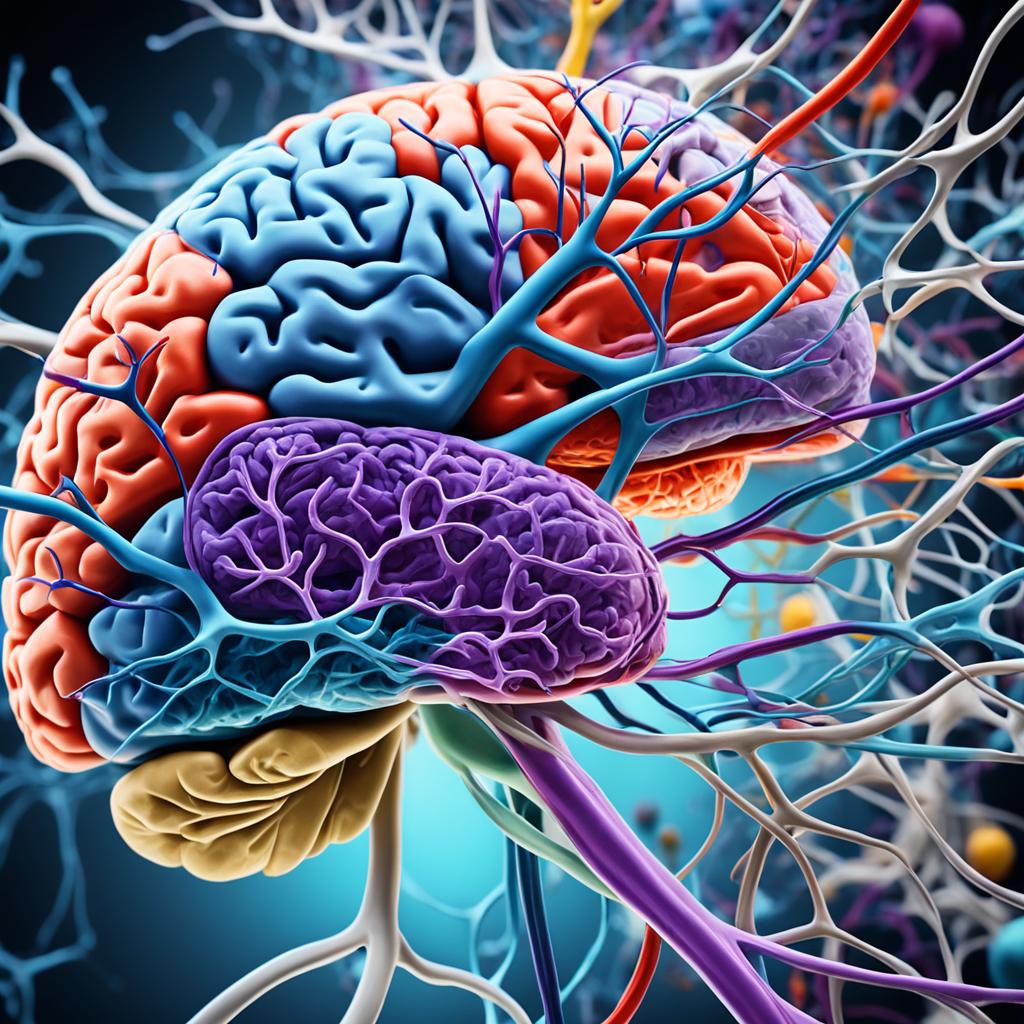Did you know that nearly 12.5% of adults in the United States suffer from a phobia at some point in their lives? A phobia, also known as an irrational fear, can have a profound impact on a person’s daily life, causing distress, anxiety, and limiting their ability to engage in certain activities or social interactions. In this article, we will explore the science behind phobias and the importance of understanding their underlying causes. Additionally, we will delve into effective treatment strategies that can help individuals overcome their irrational fears and regain control of their lives.
What are Phobias?
Phobias are a type of anxiety disorder characterized by an intense and irrational fear of specific situations, objects, or activities. These fears go beyond normal apprehension and can significantly impact an individual’s daily life. Phobias can be categorized into different types, each with its own unique triggers and symptoms.
1. Specific Phobias: These phobias involve a fear of specific objects or situations, such as spiders, heights, or flying. People with specific phobias often go to great lengths to avoid their feared object or situation.
2. Social Phobias: Social phobias are characterized by an intense fear of social situations, including public speaking, meeting new people, or participating in social gatherings. Individuals with social phobias may experience extreme self-consciousness and anxiety in these situations.
3. Agoraphobia: Agoraphobia is the fear of being in situations where escape may be difficult or help may not be readily available, such as crowded places or open spaces. People with agoraphobia often avoid these situations or require a companion when venturing outside their comfort zones.
It’s important to note that phobias are different from common fears as they cause excessive and persistent anxiety that can interfere with daily functioning. Understanding the nature of phobias is the first step towards effective treatment and management.
“Phobias are more than just fears; they can be debilitating and highly disruptive to one’s life. Recognizing and addressing these anxiety disorders can greatly improve an individual’s well-being and quality of life.”
The Science Behind Phobias
Phobias, with their gripping and often paralyzing effect on individuals, have long fascinated researchers and clinicians alike. Understanding the science behind phobias is crucial in developing effective treatment strategies. While the exact causes vary among individuals, there are several key factors that contribute to the development of phobias.
Genetic predispositions: Studies have shown that there may be a genetic component to phobias, with certain individuals being more prone to developing irrational fears. This genetic predisposition might be related to specific neurotransmitters and their role in the brain’s fear response.
Past experiences: Traumatic events or distressing experiences can imprint powerful memories that contribute to the formation of phobias. For example, a person who experienced a dog bite as a child may develop a phobia of dogs later in life. These past experiences can create lasting associations between the feared object or situation and feelings of fear or danger.
Learning theories: The science of phobias also encompasses learning theories, which suggest that phobias can be learned through the process of classical conditioning. This occurs when a neutral stimulus, such as an elevator, becomes associated with a fear response due to its pairing with a frightening or traumatic event.
The amygdala, a small almond-shaped structure in the brain, plays a central role in the development and maintenance of phobias. It is part of the brain’s fear circuit and is responsible for processing fear-related stimuli and triggering the body’s fear response. When an individual with a phobia encounters their feared object or situation, the amygdala sends signals that activate the release of stress hormones like adrenaline, leading to a range of physical and emotional responses.
“The amygdala’s involvement in phobias highlights the intricate connection between our brains and our fears. By understanding the role of this structure, researchers and clinicians can develop targeted interventions to help individuals overcome their phobias.”
The science behind phobias continues to evolve as researchers explore new avenues of understanding. Advances in neuroimaging techniques, such as functional magnetic resonance imaging (fMRI), have provided insights into the neural processes underlying phobias, further deepening our understanding of these debilitating conditions.
References:
- Smith, K., & Telles-Correia, D. (2020). The etiology of specific phobias: a review. Frontiers in Psychology, 11, 582559. https://www.frontiersin.org/article/10.3389/fpsyg.2020.582559
- Mineka, S., & Zinbarg, R. (2006). A contemporary learning theory perspective on the etiology of anxiety disorders: It’s not what you thought it was. American Psychologist, 61(1), 10–26. https://doi.org/10.1037/0003-066X.61.1.10


Common Phobias: Causes and Symptoms
Phobias are a type of anxiety disorder that can significantly impact an individual’s daily life. Understanding the causes and symptoms of these common phobias is essential in recognizing and addressing these irrational fears effectively.
Causes of Common Phobias
Common phobias can be caused by various factors, including:
- Genetic predispositions
- Traumatic experiences
- Learned behavior
Genetic predispositions can play a role in the development of phobias, as individuals may inherit a tendency to be more susceptible to anxiety disorders. Traumatic experiences, such as a spider bite or a traumatic event in an enclosed space, can create associations that trigger phobias. Additionally, phobias can be learned through observation, where individuals acquire fears by witnessing others’ anxious reactions.
Common Phobia Symptoms
Phobias can manifest in various ways, and the symptoms may vary depending on the specific fear. Some common symptoms associated with phobias include:
- Intense fear and anxiety when exposed to the object or situation they fear
- Avoidance behaviors that individuals employ to prevent encountering the feared object or situation
- Physical reactions, such as rapid heartbeat, shortness of breath, trembling, or sweating
- Cognitive disturbances, including intrusive thoughts, difficulty concentrating, and a sense of impending doom
It is important to note that these symptoms can significantly interfere with an individual’s daily life, relationships, and overall well-being.
People with phobias often feel trapped, as their fears limit their ability to engage in routine activities or explore new experiences. Overcoming these fears is crucial for personal growth and an improved quality of life.
Recognizing the causes and symptoms of common phobias is essential in seeking appropriate help and pursuing effective treatment options. By addressing these fears head-on, individuals can regain control, overcome their phobias, and live a life free from the limitations imposed by anxiety disorders.


Diagnosis and Assessment of Phobias
In order to effectively treat phobias, it is crucial to have a comprehensive understanding of the individual’s fears and their underlying causes. This is where the process of diagnosis and assessment comes into play. Mental health professionals employ various methods to identify phobias and evaluate their severity, allowing for tailored treatment plans.
Interviews
One of the primary tools used in the diagnosis of phobias is a structured interview. During this face-to-face conversation, the healthcare provider will ask questions to gather information about the specific fear, its duration, triggers, and the impact it has on the individual’s daily life. These interviews provide valuable insights into the nature and scope of the phobia.
Questionnaires
Questionnaires are another common assessment tool used to measure the severity of phobias. These self-report assessments typically consist of a series of questions that inquire about the individual’s anxiety levels, avoidance behaviors, and the extent to which the phobia interferes with their functioning. By analyzing the responses, mental health professionals can gain a better understanding of the phobia’s impact.
Psychological Evaluations
In some cases, mental health professionals may recommend psychological evaluations to assess phobias comprehensively. These evaluations can involve various assessments, such as psychometric tests and psychological inventories. They provide detailed information about the individual’s psychological functioning, helping identify any underlying psychological conditions that may contribute to the phobia.
Did You Know? Diagnosing phobias requires specialized training and expertise. Mental health professionals, such as psychiatrists, psychologists, and licensed therapists, are equipped with the knowledge and skills needed for accurate assessments and effective treatment.
A precise and accurate diagnosis serves as a foundation for developing an appropriate treatment plan. It enables mental health professionals to customize interventions that address the specific fears and individual needs of each person. By considering the severity of the phobia, the impact on daily life, and any co-occurring mental health conditions, healthcare providers can guide individuals towards overcoming their fears and regaining control of their lives.


Summary
Diagnosing and assessing phobias is a crucial step in the treatment process. Through structured interviews, questionnaires, and psychological evaluations, mental health professionals gain valuable insights into the individual’s fears and their impact. This information serves as the foundation for creating personalized treatment plans that target the specific phobia and address any underlying psychological factors. By seeking professional help and undergoing a thorough assessment, individuals can take the first step towards overcoming their fears and reclaiming their lives.
Treatment Options for Phobias
When it comes to addressing phobias, there are various effective treatment options available. These treatments aim to target the root causes of phobias and help individuals overcome their irrational fears, enabling them to lead fulfilling lives.
Cognitive-Behavioral Therapy (CBT)
One widely recognized treatment for phobias is cognitive-behavioral therapy (CBT). This approach focuses on identifying and challenging negative thought patterns and beliefs associated with phobias. Through CBT, individuals learn coping mechanisms and develop healthier thinking patterns, enabling them to confront and manage their fears.
“CBT provides individuals with the tools to understand the connection between their thoughts, feelings, and behaviors,” explains Dr. Emily Thompson, a renowned psychologist specializing in treating anxiety disorders.
Exposure Therapy
Exposure therapy is another effective treatment for phobias. It involves systematically exposing individuals to their feared objects or situations in a safe and controlled manner. By repeatedly confronting their phobias, individuals learn that the feared outcomes are unlikely, leading to decreased anxiety and increased confidence.


Medication
Medication can also play a role in the treatment of phobias, especially when combined with therapy. Anxiety-reducing medications, such as selective serotonin reuptake inhibitors (SSRIs) or benzodiazepines, may be prescribed to help individuals manage their symptoms and facilitate the therapeutic process.
However, it is important to note that medication alone is not a long-term solution for phobias. It is best used as part of a comprehensive treatment plan recommended by a qualified healthcare professional.
Overall, treatment options for phobias are diverse and aim to provide individuals with the tools and support necessary to overcome their irrational fears. Whether through cognitive-behavioral therapy, exposure therapy, or a combination of approaches, effective treatments can empower individuals to reclaim control over their lives.
The Power of Exposure Therapy
When it comes to overcoming phobias, exposure therapy has proven to be a highly effective treatment approach. By gradually exposing individuals to their phobic triggers in a controlled and supportive environment, exposure therapy aims to reduce the anxiety and fear associated with these triggers.


Exposure therapy utilizes different techniques to help individuals confront and conquer their phobias. One such technique is systematic desensitization, where individuals are exposed to their fears in a step-by-step manner. Starting with less anxiety-provoking situations and gradually progressing towards more challenging scenarios, this approach allows individuals to build resilience and develop coping strategies along the way.
Another technique used in exposure therapy is flooding, which involves immersing individuals in the most anxiety-inducing situation related to their phobia. Through prolonged exposure to this situation, individuals have the opportunity to experience a decrease in their fear response over time.
This therapy helps individuals break free from the constraints of their irrational fears, enabling them to lead more fulfilling lives. It empowers them to confront their phobic triggers, develop effective coping skills, and ultimately regain control over their emotional and physical reactions.
Exposure therapy has demonstrated remarkable effectiveness in treating various phobias, including but not limited to arachnophobia, aviophobia, and agoraphobia. Research studies have consistently shown positive outcomes, with many individuals experiencing significant reductions in their phobia symptoms and improved overall well-being.
Overcoming Fear, One Step at a Time
Exposure therapy is based on the principle of habituation, where repeated and prolonged exposure to fear-inducing stimuli gradually reduces an individual’s fear response. Through this process, new associations are formed, and individuals learn that their phobic triggers are not as threatening or harmful as they once believed.
This treatment approach also incorporates cognitive restructuring, helping individuals challenge and reframe their negative thoughts and beliefs about their phobias. By replacing irrational beliefs with more realistic and adaptive ones, individuals can develop a more positive and constructive mindset towards their fears.
- Gradual, guided exposure
- Habituation through repetition
- Cognitive restructuring
- Development of coping mechanisms
Exposure therapy offers individuals a path to freedom from the confines of their phobias. By confronting their fears head-on and gradually building tolerance, individuals can reclaim control over their lives and engage in activities they once avoided.
Whether it’s fear of heights, public speaking, or spiders, exposure therapy provides a proven framework for conquering phobias and living a life free from the limitations imposed by irrational fears.
Other Therapeutic Approaches for Phobias
While cognitive-behavioral therapy (CBT) and exposure therapy are widely recognized as effective treatments for phobias, there are also alternative therapeutic approaches that can offer additional support and benefits. These approaches include virtual reality therapy and mindfulness-based interventions.
Virtual Reality Therapy
Virtual reality therapy (VRT) is an innovative treatment method that involves exposing individuals to simulated phobic situations in a controlled environment. By using virtual reality technology, therapists can recreate a realistic scenario that triggers the individual’s phobia, allowing them to confront their fears in a safe and controlled manner.
“Virtual reality therapy has shown promising results in treating phobias. By immersing individuals in virtual environments, it provides a unique opportunity for gradual exposure and desensitization, ultimately helping them overcome their irrational fears.”
VRT can be particularly beneficial for individuals with specific phobias, such as fear of flying or fear of heights, as it allows them to experience and navigate through these situations without the associated real-life risks. It provides a highly realistic and immersive experience, enabling individuals to confront their fears in a controlled setting.
Mindfulness-Based Interventions
Mindfulness-based interventions, such as mindfulness meditation and mindfulness-based stress reduction (MBSR), have gained recognition for their effectiveness in managing anxiety disorders, including phobias. These interventions involve cultivating a state of non-judgmental awareness and acceptance of one’s thoughts, emotions, and bodily sensations.
By practicing mindfulness, individuals can develop a greater sense of control over their thoughts and emotions, allowing them to approach their fears with a calmer and more accepting mindset.
- Body Scan Meditation: This mindfulness practice involves systematically scanning the body, focusing on physical sensations without judgment. It can help individuals become more attuned to bodily reactions triggered by their phobias and promote a sense of relaxation and acceptance.
- Deep Breathing: Deep breathing exercises can help individuals regulate their physiological responses to fear and anxiety by activating the body’s relaxation response. By focusing on slow, deep breaths, individuals can help alleviate the symptoms associated with phobias.
- Guided Imagery: Guided imagery involves visualizing calming and peaceful scenes to help individuals relax and reduce anxiety. This technique can be powerful in helping individuals manage their phobic reactions and promote a sense of tranquility.
By incorporating these alternative therapeutic approaches into traditional treatment methods, individuals with phobias can access a wider range of tools and techniques to help them overcome their fears. Collaborating with mental health professionals knowledgeable in these approaches can enhance the effectiveness of treatment and provide a comprehensive strategy for recovery.
Overcoming Phobias: Self-Help Strategies
For individuals struggling with phobias or anxiety disorders, there are practical self-help strategies that can be empowering in managing their fears. These techniques, when consistently practiced, can make a significant difference in overcoming phobias and living a more fulfilling life.
A. Relaxation Exercises
One effective self-help strategy for tackling phobias is practicing relaxation exercises. Deep breathing exercises, progressive muscle relaxation, and guided imagery techniques can help calm the mind and body, reducing anxiety associated with phobic triggers. Regular practice of these exercises can enhance overall emotional well-being, providing individuals with a sense of control over their fears.
B. Visualization
Visualization is a powerful tool that can aid in overcoming phobias. By visualizing positive experiences and successfully navigating through phobic situations, individuals can rewire their minds to associate their fears with more positive outcomes. This practice can gradually desensitize them to their phobic triggers, allowing for increased confidence and a reduction in anxiety.
C. Support Networks
Building a strong support network is crucial for those seeking to overcome their phobias. Connecting with others who have similar experiences can provide a sense of validation and encouragement. Online forums, support groups, and therapy communities can offer a safe space for individuals to share their fears, exchange coping strategies, and gain emotional support from others who understand their journey.
“Taking the first step in overcoming a phobia can be daunting, but with the right self-help strategies, it is possible to face your fears head-on and reclaim control of your life.”
By incorporating these self-help strategies into their daily lives, individuals can take an active role in managing their phobias. It is important to remember that progress may be gradual, and setbacks may occur along the way. However, with persistence and a determined mindset, fear can be conquered, enabling individuals to live a life unhindered by phobias.
Seeking Professional Help for Phobias
If you are struggling with phobias or anxiety disorders, seeking professional help is crucial, especially for severe or debilitating cases. While it’s understandable to feel hesitant or embarrassed about discussing your fears, reaching out to a qualified mental health professional can make a significant difference in your well-being.
In finding the right professional to help you overcome your phobias, consider seeking out psychologists or psychiatrists who specialize in anxiety disorders. These professionals possess the expertise and experience necessary to provide effective treatment tailored to your specific needs.
The benefits of collaborative treatment approaches cannot be overstated. Working with a mental health professional allows you to tap into their extensive knowledge and skill set to develop a personalized treatment plan. Whether it involves cognitive-behavioral therapy, exposure therapy, medication, or a combination of approaches, their guidance will help you address the underlying causes of your phobias.
“Professional help provides a supportive environment where you can openly discuss your fears and anxieties without judgment. Your mental health professional will guide you through evidence-based treatment strategies, empowering you to regain control over your life and free yourself from the limitations imposed by phobias.”
Remember, seeking professional help for phobias is not a sign of weakness but a courageous step towards a better quality of life. By taking this proactive approach, you empower yourself to confront your fears head-on, gain valuable insights, develop coping mechanisms, and ultimately overcome your phobias.
Conclusion
In conclusion, understanding the science of phobias is essential for effectively addressing and overcoming these anxiety disorders. Throughout this article, we have explored the definition and classification of phobias, delved into the scientific explanations behind their development, and discussed common causes and symptoms.
We have also examined the diagnosis and assessment of phobias, explored various treatment options, including exposure therapy, and highlighted the power of evidence-based approaches. Furthermore, we have provided self-help strategies for managing phobias and emphasized the importance of seeking professional help for severe cases.
By comprehending the complex nature of phobias and utilizing the available treatment strategies, individuals can regain control of their lives and overcome the limitations imposed by these irrational fears. Whether it’s acrophobia, arachnophobia, or any other phobia, there is hope for a brighter future, free from the constraints of anxiety disorders.
